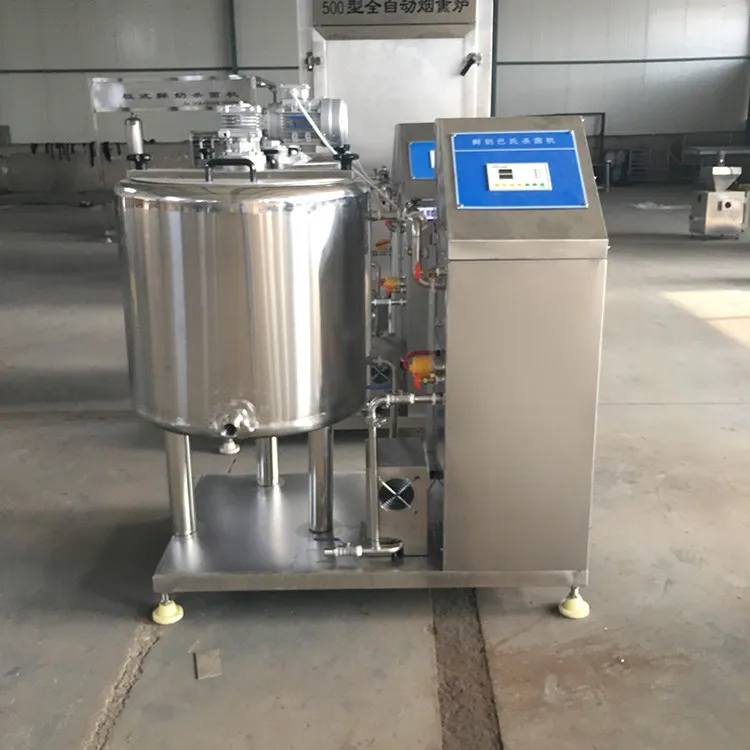Smart milk pasteurizer for fresh milk and juice sterization
Characteristics of milk pasteurizer
1. There are two forms of milk pasteurizer heating, one is electric heating, the other is steam heating. Because pasteurization is low temperature sterilization. The low temperature mentioned here is only a relatively high temperature and high pressure sterilization pot.
2. The whole machine is made of high quality SUS304 stainless steel, and the sterilization temperature and speed can be set according to the process requirements.
3. The machine runs smoothly, with low noise, high strength of stainless steel mesh belt, small flexibility, not easy to deform, easy to maintain.
4. Sterilization temperature can be set freely. Within the adjustable range, the time is adjustable. It will not cause color change, taste damage and other problems.
Operating procedures of pasteurizer for milk

1. Use advanced water of pasteurization equipment for the first time, open cold water inlet valve, and close other valves. Close the cold water inlet valve after the overflow, open the hot water inlet valve of small fresh milk processing equipment, close the water inlet switch after the overflow, and close the hot water inlet valve of pasteurization mechanism.
2. Start electric heating of pasteurization equipment, start refrigeration compressor, hot water outlet and hot water return valve. The cold water outlet and return valves of pasteurizer in milk bar are temporarily closed.
3. When the water temperature of pasteurization equipment rises to 95 ℃, turn off the electric heating, keep the hot water outlet valve and hot water return valve open, turn on the circulating water pump of pasteurization machine, and pour the milk. The water level in the hot water tank shall not be lower than the lowest water level of the level gauge. If it is lower than the lowest water level, make up water to the lowest level gauge.
4. The temperature of milk was measured by thermometer. The mixer was opened for 30s every 36s below 50 ℃ and 60s every 40s above 50 ℃ for pasteurization equipment. At the same time, the temperature of the cold water tank shall not be lower than 2 ℃ detected by the small fresh milk processing equipment. If the temperature of the pasteurizer is lower than 2 ℃, turn off the refrigeration compressor.
5. After the milk temperature rises to 85 ℃ (if the water temperature is found to be lower than 90 ℃ during the milk temperature rise process, continue to turn on the electric heating and turn off after the temperature rises to 95 ℃), keep for 15-30s. At the same time, turn off the hot water outlet and hot water return to prevent the milk from heating up, and turn off the electric heating.
6. The pasteurization equipment opens the tap water inlet valve and return valve, and then closes the tap water valve after 2 minutes. The small fresh milk processing equipment opens the cold water outlet and return valve. The temperature of milk was measured by thermometer. The mixer was opened for 60s every 36s below 50 ℃, and for 30s every 40s above 50 ℃.
7. Check the temperature from the thermometer to 4-6 ℃, and close the cold water outlet and cold water return valves of pasteurization equipment. After reaching the set temperature, it enters the cold storage process. After the sterilization process of small fresh milk processing equipment is completed, the milk valve can pump milk for consumers. The temperature tolerance during cold storage shall not be higher than 6 ℃, and the mixing time of pasteurizer shall be 60s every 20 minutes.